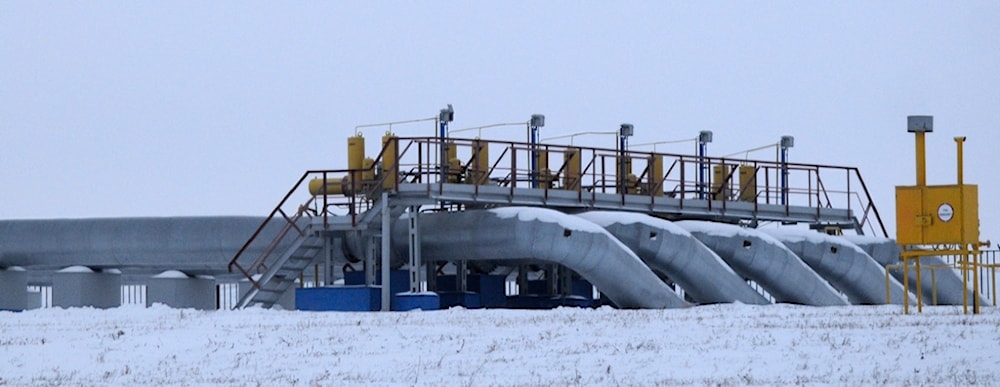TotalEnergies expert predicts partial return of Russian gas to Europe
While Russian exports to Europe once exceeded 150 billion cubic meters annually, Leautier believes that figure is unlikely to return.
-

The gas pumping station is viewed at Sudzhe, Russia, Jan. 11, 2009 (AP Photo/Sergei Chuzavkov, File)
Europe could restart imports of Russian natural gas once the war in Ukraine comes to an end, though not at the levels seen before the conflict, according to Thomas-Olivier Leautier, chief economist at TotalEnergies.
Speaking at an event hosted by the Center for Strategic and International Studies (CSIS) on Monday, Leautier said that a resumption of gas flows from Russia is likely, albeit in smaller volumes.
"One way, shape or form, once the peace is signed, there will be gas flowing, certainly not at the level where it was not healthy for us, but there will be some Russian gas," he said.
While Russian exports to Europe once exceeded 150 billion cubic meters annually, Leautier believes that figure is unlikely to return. He suggested any future gas trade could be part of a broader settlement.
"Maybe a third, a quarter, a sixth of what was flowing before, flows back to Europe. I could imagine that's going to be part of the discussion," he added.
Read more: Turkiye obtains sanction waiver from US to buy Russian gas
Prior to the conflict, Russian gas exports to Europe exceeded 150 billion cubic meters per year, supplying around 35% of the bloc's total gas needs. Following Russia's military operation in Ukraine in 2022, however, the EU swiftly moved to slash those imports, both as a political signal and an economic strategy. As of 2025, Russian gas now represents only 8% of Europe's imports, according to S&P Global Commodity Insights.
This transition has reshaped the continent's energy infrastructure. The New York Times reported that US liquefied natural gas (LNG) has emerged as a dominant substitute, while Norway now leads in pipeline supply. Simultaneously, renewable energy sources—particularly wind and solar—have surged by nearly 50% since 2021, overtaking fossil fuels in power generation for the first time in 2024.
But these gains have come at a cost.
Persistent Challenges Despite Diversification
Europe's new energy system remains vulnerable to market volatility and geopolitical pressures, particularly in the LNG sector. Competition with Asia, especially China and South Korea, has kept prices elevated. In January, US LNG shipments bound for Asia were diverted to Europe due to more profitable pricing—a sign of the global squeeze on supply.
The expiration of a 2019 gas transit deal between Gazprom and Naftogaz on January 1, 2025, has further complicated matters. With no legal or technical framework in place, gas transit through Ukraine has halted entirely, cutting off supply to Austria, Italy, the Czech Republic, Slovakia, and Moldova.
European industries have not been spared. Giants like ArcelorMittal and BASF have scaled back or relocated operations due to energy costs, while nearly 10% of Europeans face energy poverty, struggling to heat their homes in winter.
A Future with Some Russian Gas?
While many European leaders remain adamant that Russian energy dependency was a strategic mistake, analysts note a contradiction: Europe continues to purchase Russian LNG, and some suggest future peace talks could involve partial restoration of gas flows.

 3 Min Read
3 Min Read









